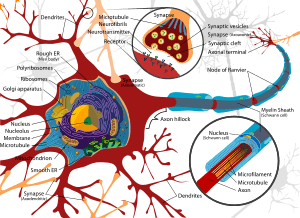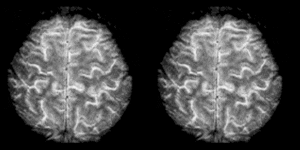
Pitt research team demonstrates gels that can be moved, controlled by light
Some animals—like the octopus and cuttlefish—transform their shape based on environment, fending off attackers or threats in the wild. For decades, researchers have worked toward mimicking similar biological responses in non-living organisms, as it would have significant implications in the medical arena.
Now, researchers at the University of Pittsburgh have demonstrated such a biomimetic response using hydrogels—a material that constitutes most contact lenses and microfluidic or fluid-controlled technologies. Their study, published in Advanced Functional Materials, is the first to show that these gels can be both reconfigured and controlled by light, undergoing self-sustained motion—a uniquely biomimetic behavior.
“Imagine an apartment with a particular arrangement of rooms all in one location,” said lead author Anna Balazs, Pitt Distinguished Professor of Chemical and Petroleum Engineering in the Swanson School of Engineering. “Now, consider the possibility of being able to shine a particular configuration of lights on this structure and thereby completely changing not only the entire layout, but also the location of the apartment. This is what we’ve demonstrated with hydrogels.”
Together with Olga Kuksenok, research associate professor in the Swanson School, Balazs experimented with a newer type of hydrogel containing spirobenzopyran molecules. Such materials had been previously shown to form distinct 2-D patterns on initially flat surfaces when introduced to varying displays of light and are hydrophilic (“liking” water) in the dark but become hydrophobic (“disliking” water) under blue light illumination. Therefore, Balazs and Kuksenok anticipated that light could be a useful stimulus for tailoring the gel’s shape.
Using computer modeling, the Pitt team demonstrated that the gels “ran away” when exposed to the light, exhibiting direct, sustained motion. The team also factored in heat—combining the light and local variations in temperature to further control the samples’ motions. Controlling a material with light and temperature could be applicable, Balazs said, in terms of regulating the movement of a microscopic “conveyor belt” or “elevator” in a microfluidic device.
“This theoretical modeling points toward a new way of configuring the gels into any shape, while simultaneously driving the gels to move due to the presence of light,” said Kuksenok.
“Consider, for example, that you could take one sheet of hydrogel and, with the appropriate use of light, fashion it into a lens-shaped object, which could be used in optical applications”, added Balazs.
The team also demonstrated that the gels could undergo dynamic reconfiguration, meaning that, with a different combination of lights, the gel could be used for another purpose. Reconfigurable systems are particularly useful because they are reusable, leading to a significant reduction in cost.
“You don’t need to construct a new device for every new application,” said Balazs. “By swiping light over the system in different directions, you can further control the movements of a system, further regulating the flow of materials.”
Balazs said this type of dynamic reconfiguration in response to external cues is particularly advantageous in the realm of functional materials. Such processes, she said, would have a dramatic effect on manufacturing and sustainability, since the same sample could be used and reused for multiple applications.
The Latest Bing News on:
Biomimetic response
- How to Utilize Direct Response Marketing for Your Businesson May 10, 2024 at 7:12 am
Many or all of the products here are from our partners that compensate us. It’s how we make money. But our editorial integrity ensures our experts’ opinions aren’t influenced by compensation.
- Russia threatens West with severe response if its assets are touchedon April 28, 2024 at 2:52 am
MOSCOW, April 28 (Reuters) - Russian officials threatened the West on Sunday with a "severe" response in the event that frozen Russian assets are confiscated, promising "endless" legal challenges ...
- Wave of pro-Palestinian protests on campus meets forceful responseon April 25, 2024 at 5:15 pm
In response, activist groups have strongly denied that the protests are antisemitic. Their aim is to pressure universities from divesting from companies that contribute to the Israeli military ...
- Nava Mau On Viewer Reactions To ‘Baby Reindeer’: “The Response Has Been Overwhelming, Like Whoa”on April 24, 2024 at 9:30 am
Nava Mau has been seeing the positive response to Baby Reindeer and is reacting to it. The star of the Netflix limited series who plays Teri, a trans woman Richard Gadd’s Donny meets on a dating ...
- Woman With 2 Degrees Cheered for Response to Dad Thinking He Knows Betteron April 19, 2024 at 6:43 am
A post on Reddit has gone viral for a father's "insecure" reaction to his daughter's work—and her confident response. Representative image of a man arguing with his daughter at home. A post on ...
- Iran’s military response will be ‘immediate and at a maximum level’ if Israel attacks, foreign minister sayson April 19, 2024 at 2:14 am
(CNN) — Iran’s response if Israel takes any further military action against it would be “immediate and at a maximum level,” Foreign Minister Hossein Amir-Abdollahian told CNN Thursday ...
- Iran Threatens ‘Fierce And Severe’ Response If Israel Launches ‘Tinest Invasion’ In Response To Weekend Attackon April 17, 2024 at 4:14 am
Iran’s President Ebrahim Raisi on Wednesday warned that any military incursion by Israel would be met with a severe response, further raising concerns of escalation as Israel mulls a response to ...
- Response to Iranian attack a must, but Israel will be smart about it, officials sayon April 16, 2024 at 1:51 pm
Hagari’s comments were latest threat from military officials, after IDF chief Herzi Halevi vowed Monday night that “there will be a response” to the approximately 350 drones and missiles ...
- Israel Weighs Response to Iran Attack, With Each Choice a Riskon April 15, 2024 at 5:00 pm
Israel does not want Iran to conclude that it can now attack Israeli territory in response to an Israeli strike on Iranian interests in a third country, some of the officials said, summarizing the ...
- Enhancing Photovoltaic System Efficiency with IQPSO Algorithmon April 14, 2024 at 7:52 pm
In MPPT systems, biomimetic algorithms are more effective ... had the highest tracking accuracy of 99.03% and the fastest response with 1.32 s tracking time among all evaluated algorithms.
The Latest Google Headlines on:
Biomimetic response
[google_news title=”” keyword=”Biomimetic response” num_posts=”10″ blurb_length=”0″ show_thumb=”left”]
The Latest Bing News on:
Biomimetic response using hydrogels
- Bioinspired magnetic soft actuators rapidly deform using bone-in-flesh constructson May 1, 2024 at 5:00 pm
However, the physical mechanisms typically used to drive untethered soft actuators—such as swelling of hydrogels ... from slow response times on the order of seconds to minutes. Prior attempts to ...
- First Study Using Biomimetic AI Digital Twins and Multiomics in Genetics Researchon April 8, 2024 at 5:00 pm
Revolutionary genomic research by Genzeva, LumaGene, RYLTI, Brigham & Women’s Hospital of Harvard University, and QIAGEN Digital Insights applied an innovative use of multiomics and biomimetic digital ...
- Using Electroadhesion To Reversibly Adhere Metals And Graphite To Hydrogels And Tissueson March 30, 2024 at 9:21 pm
The usual way to get biological tissues and materials like gels and metals to stick together is using sutures ... Sticking Metals and Graphite to Hydrogels and Tissues by [Wenhao Xu] and ...
- How to Make Music From a Text Prompt Using Suno AIon March 12, 2024 at 9:06 pm
I was happy with what ChatGPT gave me, so I kept it as it was. You can always ask it to make modifications to its response. Using prompting techniques can greatly improve your ChatGPT experience.
- Wounds and Healing Newson March 12, 2024 at 5:00 pm
Apr. 2, 2024 — Polymer-based hydrogels are used to treat skin ailments and in tissue engineering because of their ability to retain water, deliver drugs into wounds, and biodegrade. However ...
- Spotlight on hydrogelson February 19, 2024 at 1:50 pm
When cells are encapsulated within a homogeneous gel matrix and given the right soluble cues, such as growth-factor proteins added to the culture medium, they can start to multiply and migrate ...
- Koyal Garg, Ph.D.on October 15, 2023 at 5:08 pm
To achieve this goal, we are pursuing a regenerative approach that involves the use of multifunctional biomaterials that ... and are processed in various forms such as biosponges, hydrogels, ...
- Upping Your Prompt Engineering Superpowers Via Target-Your-Response Techniques When Using Generative AIon September 4, 2023 at 4:00 am
The other element that is blended into your prompt consists of explaining what you want the response to be like. I dare say that most rookies using generative AI seem to entirely neglect the ...
- New expansion microscopy methods magnify research's impacton January 1, 2023 at 4:00 pm
Magnify is a variant of expansion microscopy that allows researchers to use a new hydrogel formula, invented by Zhao's team, that retains a spectrum of biomolecules, offers a broader application ...
- Tissue Engineering and Biomaterialson February 11, 2016 at 1:03 am
Lee Group projects include applying biomimetic structural designs to create tough hydrogels that can potentially function as tissue adhesives or extracellular matrices for tissue repair and ...
The Latest Google Headlines on:
Biomimetic response using hydrogels
[google_news title=”” keyword=”biomimetic response using hydrogels” num_posts=”10″ blurb_length=”0″ show_thumb=”left”]










